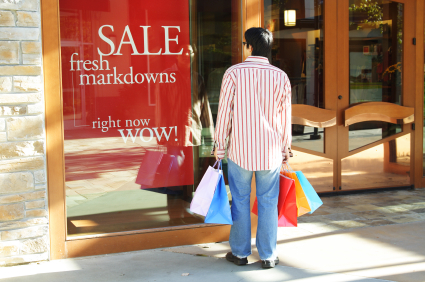Pricing and the Power of Red
This is one of our free-to-access content pieces. To gain access to all Ideas for Leaders content please Log In Here or if you are not already a Subscriber then Subscribe Here.

Retailers commonly highlight prices and ‘good deals’ in red in their ads and promotional material. But relatively little is known about how this affects consumers. New research reveals that the impact varies significantly by gender. Put simply: men are likely to see a bargain when they see red; women are far less easily swayed. The findings have clear implications for companies — and for precision marketing.
The colour red has long been associated with pleasure, and its effects have long been the subject of research. Studies have suggested that it serves as a ‘heuristic cue’ or shortcut when people make judgments and decisions. (In 2008, for example, researchers found that sports referees assign more points to competitors wearing red than those wearing blue.) There’s also some evidence that the perception of red is handled by a cognitive subsystem distinct from the subsystem processing blue and yellow: it has a dedicated region of the brain’s cortex that seems to have evolved more recently.
Men appear to be particularly susceptible to the colour’s effects: several studies have shown that women who wear red are more likely to attract members of the opposite sex. (One, in 2010, even suggested men will be more willing to spend money during a date if the woman wears red.)
Understanding findings like these might be important for business. Use of the colour red to indicate and emphasise savings is widespread in adverts for retailers.
How does colour influence purchasing decisions? And how does its effect differ between men and women? To try to answer these questions and add to insights into the way people process information in advertising, researchers tested perceptions of red versus black prices among graduate students at an American university. They found strong support for the hypothesis that the effect of red is moderated by gender.
Male participants perceived greater savings when prices appeared in red rather than black — but no such effect was seen among women. What’s more, this finding persisted in the context of multiple ads, suggesting red has more than a ‘novelty value’ for men.
Why are male consumers influenced in this way? Re-confirming that red connotes pleasure, the results correlated with participants’ moods. Seeing a price in red put men in a more positive state and this, in turn, positively affected their perceptions of savings. Women, on the other hand, showed a similar pattern of ‘positive affect’ towards both red and black prices.
‘Affect’ isn’t the only factor at work, though. The researchers confirmed previous findings that men tend to be ‘shallow processors’ of advertising and to dislike the ‘cognitive burden’ of in-depth information and ‘elaboration’. They found women to exhibit better memory for price information and to be more sceptical about the widespread use of red to highlight prices. (Women performed better in recall tests and perceived fewer savings when shown multiple ads featuring prices in red.)
Having a higher threshold for ‘elaboration’, men, it seems, are more dependent on ‘heuristic cues’ in making judgments. So should advertisers targeting men keep ‘copy’ to a minimum? Not necessarily. The results of the experiments also show, in line with the researchers’ predictions, that men will surrender ‘heuristic cues’ when motivated to do so. In one experiment, the involvement of male participants was manipulated by dividing them into two groups. One was told they’d be evaluating products that would be marketed to their local metropolitan area (high involvement); the other was given no information about the marketing of the products (low involvement). The effect of red on men disappeared in the former condition.
In spite of e-commerce growth and tighter margins, bricks-and-mortar retailers continue to churn out full-colour weekly circulars and local adverts to lure customers. As they compete ever more fiercely on price, they’ve become more creative in the use of colour to signal value.
Wal-Mart, for example, highlights promotions with its red ‘Rollback’ logo or superimposes the price on a red background.
This research points to two main ways to use colour more strategically in promotional material:
More generally, perhaps, it also points to the importance of precision marketing. Digital technology and social media and the spread of ‘hyperlocal’ online newsletters mean it’s increasingly possible to target individual consumers or individual groups of consumers who might be interested in your products and services.
Companies marketing to men might be at a particular advantage when they use these kinds of tools. The higher the male consumer’s sense of involvement and engagement, the higher the chances he will ‘process’ what you say.

Ideas for Leaders is a free-to-access site. If you enjoy our content and find it valuable, please consider subscribing to our Developing Leaders Quarterly publication, this presents academic, business and consultant perspectives on leadership issues in a beautifully produced, small volume delivered to your desk four times a year.

For the less than the price of a coffee a week you can read over 650 summaries of research that cost universities over $1 billion to produce.
Use our Ideas to:
Speak to us on how else you can leverage this content to benefit your organization. info@ideasforleaders.com